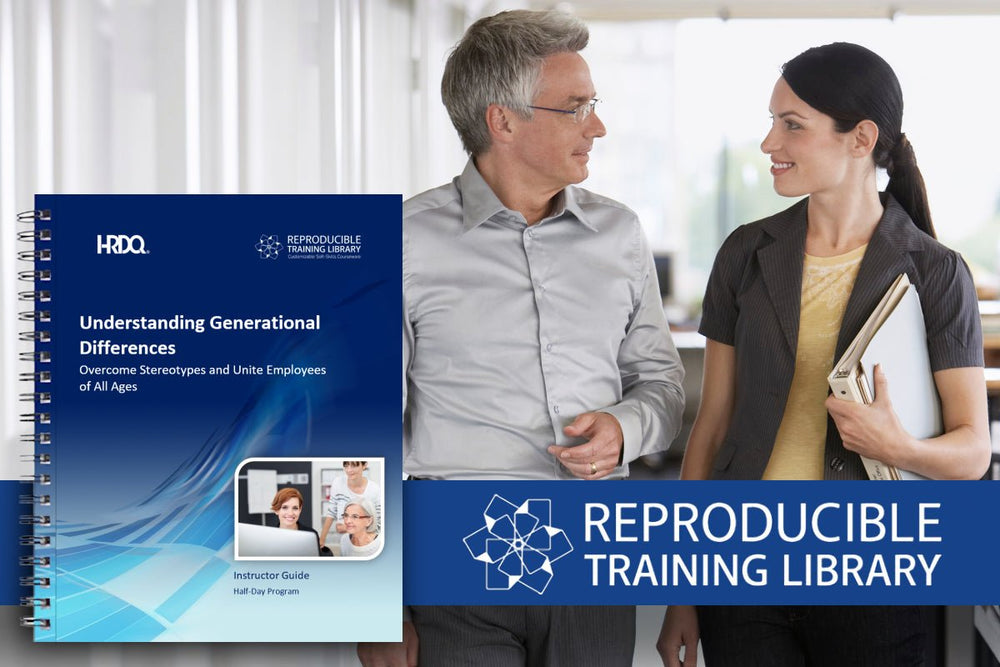Share
The Benefits of Multigenerational Teams in the Workplace
Bradford R. GlaserWhat is it like when Baby Boomers and Gen Z now work side by side in the same office? The workplace is now really buzzing these days, and it has just become an even more active patchwork made up of people from a few different generations!
It's pretty fascinating to work with this blend. Each generation actually brings a specific mix of talents and plans. It makes for a workspace loaded with new opportunities.
So, why should companies pay much attention to the different ages of their staff? Companies should really think about the advantages of having a workforce that spans different generations. It could be very important for launching creativity and even boosting output.
Let's talk about how different age groups can now unite to form a pretty unique work environment.

- Understand the changing workplace
- Identify challenges
- Connect with all generations
Table of Contents
The Unique Strengths of Each Generation
Multigenerational teams at work now bring together a bunch of pretty different strengths and skills. These skills can actually help with overall team performance and productivity. It's super important to recognize what exactly each generation brings to the table. This is definitely important for making the most of a pretty different workforce.
To start with the Silent Generation, or Traditionalists, their knowledge and long-term industry experience are really valuable. This group brings a solid business sense. They also have knowledge of strategies that have been pretty helpful over the years. Their historical plans give you a stabilizing force. This helps with sound decisions and gives a strong foundation for the team.
Baby Boomers add a lot of knowledge and skills from their impressive careers. They play a big part in mentoring and guiding younger team members. They actually pass on important knowledge and strong work ethics. This is really important in many different fields. They also value organization. This brings a bit more order and structure. It can definitely help fit the innovative yet sometimes scattered ideas from the younger crowd.

Generation X people can bring a more balanced perspective. They have mature wisdom and a strong streak of independence. They fill the gap between the older generation's preference for hierarchy and the younger generation's push for teamwork and flexibility. They also love work-life balance. This is definitely important for mixing traditional ways with modern needs. They can also help smooth team interactions and workflows.
Millennials, or Generation Y, do well with job satisfaction and flexible working conditions. Their familiarity with online tools and innovative thinking pushes them to talk about new technologies and agile methods. Their modern strategy speeds up the transformation of business processes. It makes operations a bit quicker and more flexible to market changes.
Lastly, Generation Z stands out with their sharp ability to understand and apply the latest patterns and technology. They are creative and definitely value diversity and addition. They can bring pretty fresh approaches and ideas to the table. Their knack for technology actually improves business strategies. This expands possibilities within team projects and overall company strategies.
Each generation's contribution is huge. This shapes a workplace that is innovative, stable, and more flexible to future challenges!
Benefit: Culture of Inclusivity and Respect
Creating a culture of inclusivity and respect with your multigenerational teams is super important because it taps into the full potential of different age groups! Your organization can now build this culture with some helpful strategies. One good strategy is to hold regular sensitivity and extra training sessions. These meetings can help team members understand and value all kinds of views and strengths that all kinds of age groups actually bring to the table. They also create a workplace where everyone feels pretty valued and respected.
Applying policies to ensure respect across all age groups is another really important step. These policies might include easy communication rules and customized conflict resolution strategies that specifically address any generational differences.
Think about how a welcoming and respectful work environment affects the bigger picture. One clear benefit is better employee satisfaction. When people feel respected and recognized, they are more involved and committed to their jobs. It naturally improves company loyalty and definitely reduces turnover rates. A workplace that really values inclusivity also stands up against discrimination and definitely champions equality. These are some traits that are really attractive to possible and latest employees.

The mix of generational knowledge and experiences in your workforce sparks innovation and creativity. You can actually unlock this kind of innovation by mixing fresh, tech-savvy ideas from younger team members with the proven approaches of older colleagues. This unique combination can now lead to new solutions and methods that might not come up in a less different environment.
Working with different age groups also helps a lot with problem-solving efforts. Each generation brings its own perspectives and problem-solving techniques, enriching discussions. This definitely leads to more helpful decisions. Such a different strategy definitely improves decision quality and improves productivity, too. Younger employees usually introduce quicker, more efficient job execution methods, while older staff members contribute plans for staying away from possible risks based on their past experiences.
Cross-generational interaction is really important, and it gives you a great chance to share knowledge. Senior employees share their valuable experiences and plans, guiding you through those complicated challenges. Younger team members keep older employees updated on the latest technological advances and industry patterns. This kind of exchange helps make sure the whole team stays flexible and competitive in a fast-changing market!
This kind of engagement drives your organization internally and also improves its position in the competitive business scene. It also helps set your organization apart as a leader in inclusivity and innovation.
Benefit: Cross-Generational Mentoring Programs
Cross-generational mentoring programs in the workplace create a pretty natural way for everyone to learn from each other. You may now ask yourself why we wouldn't want the wisdom of seasoned pros mixing with the fresh ideas of new starters! It is like having a secret recipe that actually improves everyone's growth and definitely strengthens the company at the same time.
These programs are really useful. They can now take the rich knowledge of older employees and pass it on to younger people. The really important tricks of the trade and hard-earned plans don't just disappear when someone retires. Mentoring relationships add more skills to everyone's toolbox since young workers pick up practical knowledge that's not in their textbooks, and the older crew gets up to speed on the latest tech and different patterns. This is like building a team that has the best of both the old school and the new school.
We should also talk about becoming a leader. These mentoring programs are like a training ground and actually make the up-and-coming leaders by giving them a bit of a leg up with advice and plans straight from those who've been there.
How well does your team really get along? Cross-generational mentoring also smooths out the kinks in communication and really helps everyone, young or old, to sync better and really understand what the other is saying. Imagine a workplace where everyone really gets along, no matter their age, and think about how that would definitely change the air around the place.

Keeping everyone pretty interested and attached to their roles is also important. Everyone wants to feel like they're moving forward. When workers of all ages teach and support each other, it pretty much sparks more joy at work and ties them even closer to the organization.
Innovation is another big win. Mixing traditional approaches with new ones definitely leads to creative solutions that might never have popped up otherwise. It is like those brainstorming sessions that can come up with something genius.
Networking now gets easier within these mentoring circles. Having a mentor or mentee can open up doors you didn't even know existed. This process also smooths the way for future leaders to step up easily when the time comes.
These programs help polish those all-important people skills. Everyone learns to relate better across the age group. This makes the workplace more pleasant and positions everyone for greater successes.
Benefit: Different Perspectives for Innovation
Mixing different age groups in teams helps create innovation and creativity. Seasoned pros who share their wisdom with younger, tech-savvy colleagues blend traditional knowledge with contemporary techniques. They can come up with some really creative ideas! Certain companies always seem to lead the pack because they always use the different skills and experiences of employees across generations. This makes their creativity and problem-solving skills even better.
Different teams can bring more creativity and stronger problem-solving abilities. It is really important for handling today's complicated workplace. Think about a tough challenge at work: a team with members from multiple generations can draw from a wider number of experiences and perspectives. This leads to more innovative solutions that might not occur in more uniform groups. This also challenges basic assumptions and brings new ideas to the table. It is important for tough innovation and making decisions that align well.
Adaptability is really important in fast-moving industries with growing customer needs and advancing technologies. Multigenerational teams are great in this area and adapt quickly while keeping a competitive edge. Companies with this diversity draw a lot of top talent, and it helps with their brand image. It makes them attractive to customers who value both modern and welcoming values.

Think about employee engagement and retention. Different teams can create an environment where everyone can feel appreciated and encouraged to share their unique ideas, experiences, and backgrounds. This inclusiveness improves engagement and loyalty among employees. They feel a stronger connection and commitment to the organization's goals.
Overall, accepting diversity across generations fuels innovation in all kinds of industries. This also helps with the execution of these innovative ideas, leading to better products and services. Businesses with high diversity scores usually see a bigger share of revenue generated from new innovations. It shows a direct link to better financial outcomes.
Leaders should intentionally form teams with a mix of generations, especially for projects that need fresh thinking and helpful problem-solving. This strategic strategy can now really help with your company's innovation capacity.
What Challenges do Multigenerational Teams Face?
Multigenerational teams now pack a lot of experience and perspectives. That is pretty awesome! But they also have their hurdles. It can definitely mess with how well they work together. You should get the hang of these challenges because this is important for making the most of a different workforce.
One main issue is how different age groups communicate. The younger bunch might like snappy online conversations, while the older crowd could lean toward more in-person conversations. This mix-up can cause some confusion and might even slow down how well they work together unless you address it with easy and open communication methods.

Technology also poses different challenges. Older people might stick to the tried and true and shy away from new tech, while younger ones are all about accepting and driving new tech solutions. This gap can just drag on progress and stir up tension among team members who aren't seeing eye to eye on innovation.
Leaders must step up their game in these kinds of mixed-age teams. Some people might get more out of a strong, direct leader. Others can grow well under a leader who focuses on teamwork and support. Helpful leaders in these specific settings need to be great at picking up on what works best for them and changing their style to keep everyone motivated and in sync.
Lastly, conflicts based on age can usually pop up when younger and older employees don't see eye to eye on workplace priorities. Younger people might also want to climb the ladder quickly and push for personal growth, while older employees might value steadiness and gradual progress. This is why open conversations and clear policies are really important for figuring out and addressing these differences, creating a workplace where everyone works together well!
Plan for Succession with Confidence
As we've seen, you can really give your company a leg up by mixing different age groups at work! Fresh ideas and seasoned perspectives can really shake things up and help your organization in so many different ways. A company that covers this age mix actually taps into a super creative powerhouse. It definitely improves problem-solving and widens the number of skills available.
So, why would any smart company miss out on these big benefits from having such a diverse team? Bosses at every level now need to push for a work culture that's full of openness, respect, and understanding among different age groups. Programs that get different generations mentoring each other can be a huge help. They actually make sharing knowledge and respect just part of how things are done, not even a rare thing.

The process of recognizing the value of different generations is just the beginning. Companies need helpful tools to bridge the gaps between generations and even deepen their understanding of each other. Here at HRDQ, we have something that can help – it's our Understanding Generational Differences Customizable Courseware. It can be a doorway to very meaningful conversations and real change when it comes to managing employees from different generations in your workplace. Understanding Generational Differences helps you identify the challenges of working with multiple generations and learn the tips and skills to overcome those challenges.





















































